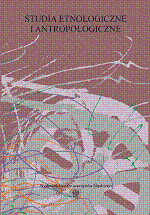Miasto jako wartość rzeczywista i autoteliczna na przykładzie Żarek w powiecie myszkowskim
A city as a real and autotelic value on the basis of Żarki in Myszków county
Author(s): Maria ŻarskaSubject(s): Anthropology
Published by: Wydawnictwo Uniwersytetu Śląskiego
Summary/Abstract: Żarki is a city which until the beginning of the World War II was inhabited and cocreated by two nationalities, that of Poles and Jews. A joint business allowed for easing arising conflicts and fostering its development. An agreeable co existence of the community in Żarki was based on following certain rules of behaviour. Contemporary inhabitants of Żarki connected to the city for generations show a strong identification with many areas of the city space. The knowledge of the city and its inhabitants is transmitted in families. A family tradition allows for moving in familiar spaces. Only a person having multi generational origins in the city knows its all areas and understands proper names, as well as differentiates the nicknames and street names which do not exist any longer. A special behaviour of people generationally connected to the city is observed in such places as church and cemetery, where certain groups were given an allocated space. The incoming people constitute a different category in the process of identification with the city. They came here in search of work and treated the city in an instrumental way. The process of becoming settled into the city was not easy. The incoming people were often isolated. The integration was difficult and slow. New inhabitants contribute to the creation of several estates where they built their own houses, which gives them the sense of self value. Currently, certain differences in behaviour between people coming from Żarki and those incoming are still visible. However, living next to one another extorts joint actions, such as the restoration of a historic barn. The very enterprise is called “Kupiecki Sąsiek” and gathers local artists on market days.
Journal: Studia Etnologiczne i Antropologiczne
- Issue Year: 2010
- Issue No: 10
- Page Range: 287-298
- Page Count: 12
- Language: Polish

